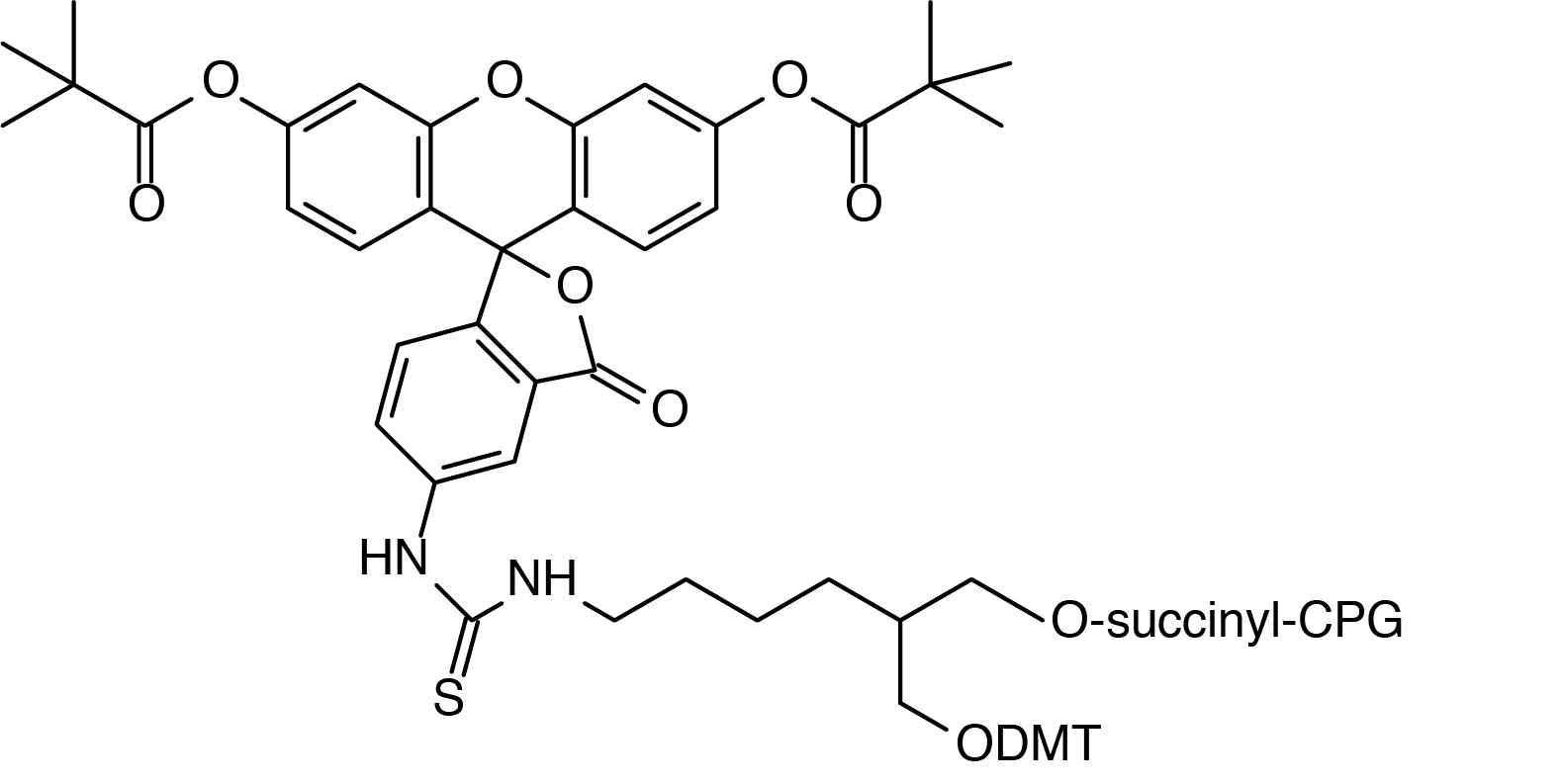FLUORESCEIN LABELLING
5’-Fluorescein phosphoramidite contains no 4,4’-dimethoxytrityl (DMT) group and can be added only once at the 5’-terminus, thereby terminating synthesis. This product is prepared using the 6-carboxyfluorescein derivative. The tetrachloro-, hexachloro-and dichloro-dimethoxy-fluorescein phosphoramidites are designed to take advantage of the multicolor detection capability of modern DNA sequencers and genetic analyzers. Fluorescein phosphoramidite is designed to produce the same fluorescein-type structure as had been previously prepared using fluorescein isothiocyanate (FITC). Our fluorescein phosphoramidite also contains a DMT group to allow quantification of coupling. The analogous structure, 6-Fluorescein Phosphoramidite, prepared using 6-FAM, is also available, along with 6-Fluorescein Serinol Phosphoramidite. Fluorescein-dT can be inserted into the desired sequence as a replacement for a dT residue.
We offer five fluorescein supports. Fluorescein CPG has traditionally been used to add the fluorescein label at the 3’-terminus. The analogous structure, 3’-(6-Fluorescein) CPG, prepared using 6-FAM, is now also available, along with 6-Fluorescein Serinol CPG. We also offer 3’-(6-FAM) CPG and Fluorescein-dT CPG, both derivatives of 6-carboxyfluorescein (6-FAM). Both are single isomers and use an amide linkage which is stable during cleavage and deprotection and does not allow isomer formation. 3’-(6-FAM) CPG allows effective blockage of the 3’-terminus from polymerase extension as well as exonuclease digestion. Fluorescein-dT CPG allows both of these enzymatic activities to proceed. Normal cleavage and deprotection with ammonium hydroxide readily generates the fluorescein labelled oligos.

Catalog Number: 20-2963-xx
Description: 3'-Fluorescein CPG
1-Dimethoxytrityloxy-2-(N-thiourea-(di-O-pivaloyl-fluorescein)-
4-aminobutyl)-propyl-3-O-succinoyl-long chain alkylamino-CPG |
|
|
F.W.: 598.56 |
Diluent: Not Applicable |
| Coupling: This support should be used in a manner identical to normal protected nucleoside support since it contains the DMT group. |
| Deprotection: Cleavage of the oligonucleotide from this support requires 2 hours at room temperature with ammonium hydroxide. Complete the deprotection using the protocol required by the nucleobases. |
| Storage: Freezer storage, -10 to -30°C, dry |
| Stability in Solution: Not Applicable |
If you cannot find the answer to your problem then please contact us or telephone +44 (0)1954 210 200